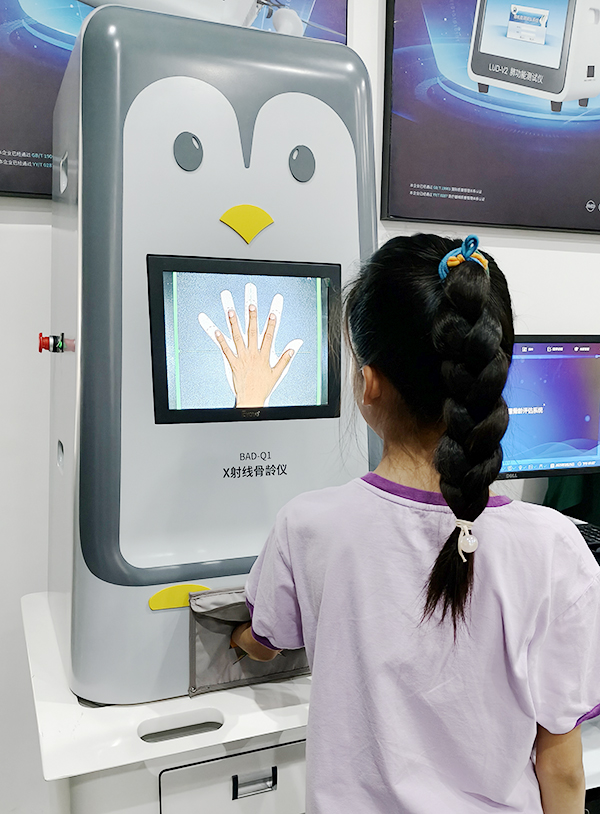The core detection area of a bone age meter is usually the wrist (carpal bones, metacarpal bones and phalanges). The wrist area has a large number of bones, a clear and regular development sequence, and can clearly reflect the maturity of the bones. It is an internationally recognized site for bone age assessment. In bone age testing, the left hand is a routinely recommended testing site both internationally and domestically in clinical practice. Only in special circumstances will the right hand be considered. The specific selection logic and reasons are as follows:
Conventional option: Prioritize the detection of the left hand
Clinical bone age assessment is all based on the left hand as the standard reference. The core reasons include:
1. Physiological symmetry and less influence from the dominant hand: The bones of the left and right hands in the human body develop highly symmetrically. However, most people are right-handed, and the right hand is more frequently used in daily activities. Due to minor external forces or usage habits, there may be slight differences in bone shape (such as slight wear and tear on the phalanxes), while the left hand is relatively “idle”, which can more objectively reflect the natural maturity state of the bones.
2. Unified standard system: The sample data of mainstream bone age assessment maps are all based on the left hand bones. Using the left hand as the detection site can be directly compared with the standard data, reducing assessment errors and ensuring the accuracy of the results.
3. Clinical operation habits: Long-term clinical practice has formed a detection standard centered on the left hand. Doctors can make more accurate judgments on the bone zoning and developmental nodes of the left hand, improving the detection efficiency.
Special circumstances: Exceptional scenarios for detecting the right hand
The right hand will only be used when there are abnormal conditions in the left hand that affect the detection. Common situations include:
1. There is a definite trauma to the left hand (such as a fracture or joint injury), and the bone morphology or development process is disturbed;
2. There are congenital malformations in the left hand (such as polydactyly, syndactyly, or skeletal dysplasia), making it impossible to clearly identify the standard assessment area;
3. There are severe burns and scar tissues on the left hand, which block the bone image and affect the judgment of film reading.
Post time: Nov-25-2025


